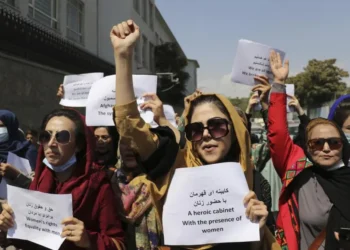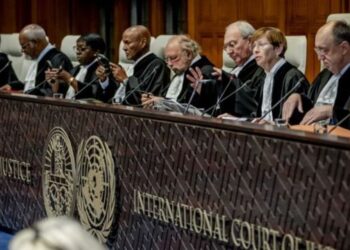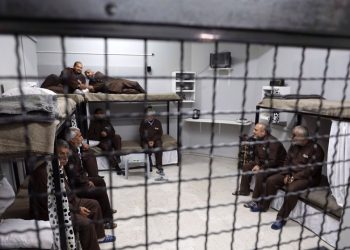Human Lives Human Rights: In this day and age, violations of human rights and crimes against humanity are considered as violations of international peace and security. In response to human rights violations, a number of way outs and norms have been established, such as the Responsibility to Protect (R2P), annual general meeting, United Nations Security Council, they showed response in many cases of human rights abuses and crimes against humanity in places such as Rwanda, Somalia, the Balkans, Kosovo and Libya. However, in case of Myanmar, despite the existence of such bodies, the human rights situation has been much more severe and much longer in terms of duration, than that of the countries mentioned above. The international community, for various reasons, has not seen any practical action from the Security council, despite reports from the Secretary-General, the Human Rights Council and other UN bodies.
Violation of international peace and security is one of the phenomena of the international environment, which after the end of World War II, was given special importance in the form of the UN Charter. Until the end of the Cold War, the concept of violation of international peace and security was defined and categorized as a defense-security concept. But with the end of World War II, this concept, like many other major concepts of international relations, underwent a change of meaning and a broad interpretation was provided.
Accordingly, among the most important violations of international peace and security in the post-Cold War period is the violation of human rights in its various forms. Violation of human rights in its various forms such as war crimes, crimes against humanity, genocide, etc. are among the issues that the United Nations and other UN bodies can interfere and act upon.
Meanwhile, in the 1990s, various manifestations of human rights violations were observed around the world, and the Security Council, as the body responsible for maintaining international peace and security, intervened in a variety of cases by providing a different interpretation of its existential philosophy and the concept of international peace and security. However, despite the fact that the Security Council intervened, many such cases were repeated in the first decade of the 21st century. It intervened in the crisis of Kurdistan and southern Iraq in 1991, which led to the implementation of a no-fly zone in these areas.
In the 1990s, the Security Council also intervened in other areas, such as Somalia, the Balkans and Kosovo. However, with the beginning of the new century and the inadequacy of the doctrine of humanitarian intervention by the then Secretary-General of the United Nations, this group began its efforts to complete and evolve this doctrine. Responsibility to Protect (R2P), a political commitment was unanimously adopted at the 2005 World Summit and a new development took place in the field of humanitarian intervention of the United Nations and the Security Council, increasing the role and function of these two organizations. In 2011, with the severe repression of the Libyan people under Muammar Gaddafi’s regime, the realization of the application of this doctrine provided the necessary ground for the intervention of the Security Council, and this doctrine was tested for the first time.
Therefore, in this case, for the United Nations to intervene in these cases, there is both the necessary legal framework and also important roles played by the United Nations and other international legal institutions.
This analysis tries to investigate one of the bloodiest human rights violations in the post-Cold War period by examining the necessary grounds for humanitarian intervention in such cases, and to monitor the performance of the above-mentioned international bodies.
International peace and security and human rights violations in its various forms have always been of paramount importance. But after the end of the Cold War, the two concepts merged. As a result, human rights violations in various forms were considered a violation of international peace and security and this in itself, shows the great importance of human rights violations. But what has added to the importance of this research is that the case study of this research, which is based on one of the most catastrophic cases of contemporary human rights violations. This is a case study of the violations of the rights of Muslims in Myanmar.
The point that is very important in this regard is that, on the one hand, the humanitarian catastrophes in Myanmar are among the latest human rights violations and are completely in front of the international community and on the other hand, these events are happening deliberately and systematically against the Muslims of Myanmar. Therefore, there is a need for a purposeful and scientific study of how these events took place against the Muslims of Myanmar and the role of international organizations in this regard.
Theoretical Framework
- The concept of human security
Gradually, in the years leading up to the end of the Cold War, revisions were introduced with the aim of understanding the concept of security more accurately and broadly. The root of the term human security can be traced in the policy statements and resolutions issued by the United Nations in the mid-1990s, particularly in the 1994 United Nations Development Program report. The Report defined human security based on two principal aspects: “It means, first, safety from such chronic threats as hunger, disease and repression. And second, it means protection from sudden and hurtful disruptions in the patterns of daily life -whether in homes, in jobs or in communities”.
In the second approach, human security means “freedom from need”. Padesky’s definition of human security fits into this approach. In his view, human security includes “a set of knowledge, technology, institutions and activities that support, defend and protect aspects of human life, as well as processes that promote collective peace and progress to enhance human freedom.”
In addition, some people believe that human security in the context of development goes beyond the need for freedom and includes other freedoms and values. For example, UNU’s Vice Rector Thakur claims that Human security is concerned with the protection of the people from critical and life-threatening dangers, regardless of whether the threats are rooted in anthropogenic activities or natural events, whether they lie within or outside states, and whether they are direct and structural. It is ‘human-centered’ in that its principal focus is on people both as individuals and as communal groups. It is ‘security oriented’ in that the focus is on freedom from fear, danger, and threat.
Therefore, in view of the explicit wording of Article 3 of the Universal Declaration of Human Rights that “Everyone has the right to life, liberty and security of person,” it should be noted that “security” is a general and universal concept, and all human beings have the right to enjoy this. On the other hand, it should be noted that security is primarily an inherent right to the resident, like the right to life, that is, it is not a phenomenon that the government or any other legal and political entity grants to human beings, rather, it is a God-given phenomenon that every person enjoys from the moment of birth to the moment of death.
- Broad Schools of human security
The broad schools argue that human security means more than a concern with the threat of violence. Human security is not only freedom from fear but also freedom from want. An even broader definition of human security is that given by Sabina Alkire in an article titled “A conceptual framework for Human Security” in 2003. He says the Vital Core of human security represents a set of key interests, values and needs of people that need to be protected. Thakur defends the concept of broad structures because the aim of human security is the protection of “the vital core of all human lives in ways that enhance human freedoms and fulfillment.”
- The doctrine of humanitarian intervention
The doctrine of humanitarian intervention is generally related to the approach of countries from the nineteenth century onwards. During this period, although war and other forms of coercion were not banned in international relations as a tool of national policy, countries nevertheless sought to justify the use of force for moral and political reasons in accordance with the tradition of just war. However, the tradition of just war was more established during this period, and countries could justify their wars accordingly.
Nevertheless, the idea of humanitarian intervention was also based on a legal theory according to which countries had the right to military intervention in cases where a country abused its citizens in a way that afflicts the conscience of humanity. This intervention was called the “Doctrine of Humanitarian Intervention” for humanity and it was largely related to the philosophy of political liberalism and the concept of human rights, which led to the establishment of constitutional democracies in Europe and the United States during the 18th century.
Examples include the protection of minorities in the Ottoman Empire:
- The mass intervention of Britain, France and Russia in Greece (1830-1897) with the aim of stopping the massacre of Turks and suppression of the revolutionary population of Greece.
- French intervention in Lebanon (1860-61), authorized and supervised by the five great European powers aimed at stopping the massacre of the Christian minority under Ottoman rule.
- The intervention of Austria, France, Italy, Prussia and Russia (1866-68) on the island of Ottoman Crete to support the oppressed Christian population.
Despite the existence of these records and their similarity in the second half of the 19th century and the beginning of the 20th century, the method of countries in the first half of the twentieth century has not always been inclined to the humanitarian intervention.


















